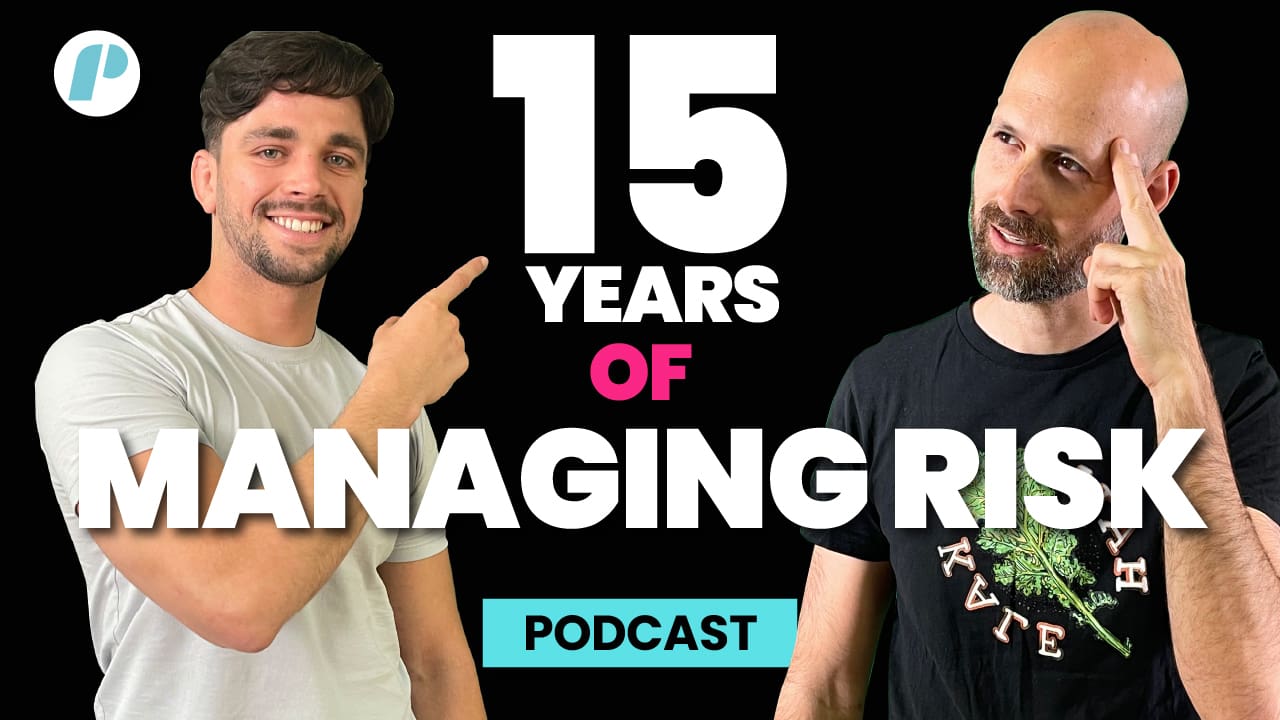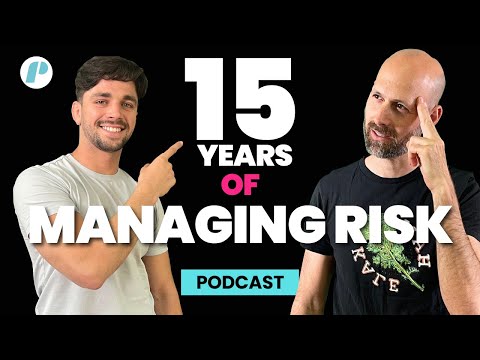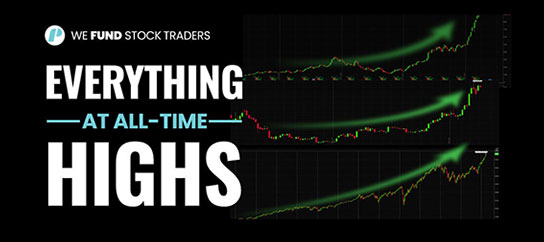
A Trader Over The Shoulders Podcast
A trader over the shoulders is all about professional insights and inspiring stories covering all aspects of trading.
Join Alex and Miki Katz, a professional trader of 15 years, for a new episode each week.
Watch EP 04 – An Active Trader’s Guide to Developing Risk Management Day Trading
Episode 04 – Join us In this special podcast where Alex picks Miki’s brain on everything to do with risk management. You’ll leave with methods that you can be implemented into your day-to-day trading from a pro trader of 15 years.
Understanding Risk Management in Trading and in Life
Risk management is an essential aspect of trading that many traders, especially the younger ones, tend to overlook. However, risk management applies not just in trading but in every aspect of our lives. Every decision and action we take involves some level of risk, and the key is to evaluate the probability and potential outcomes before making a decision.
Calculating Probability in Trading
When it comes to trading, risk management involves evaluating the probability of a trade working in your favor and taking calculated risks based on that probability. For instance, if you specialize in trading flags, you can analyze the last 100 or 200 trades you made and calculate the probability of a flag trade resulting in a positive outcome above your entry price. This data helps you make informed decisions and choose the trades with the highest probability of success. Keeping a trading journal and taking the proper stats is essential to understanding your strengths and weaknesses as a trader and making informed decisions based on probability.
Applying Risk Management in Daily Life
Risk management principles also apply to everyday life, from the risks we take when driving to work or deciding to get married. Evaluating the probability and potential outcomes of our decisions helps us make better choices and reduce unnecessary risks. In conclusion, understanding and applying risk management principles is crucial for success in both trading and everyday life.
Developing Risk Management Strategies for Trading
As a new trader, it can be difficult to determine the appropriate risk management strategies to use when you haven’t yet gathered sufficient data on your trading performance. One approach that can be helpful is to start with a one-to-one ratio, but be aware that your actual success rate may vary depending on factors such as slippage and commissions. Ideally, you want a success rate of around 53%-54% if you’re using a 1:1.5 ratio, as this will allow you to start making money. As you gather more data and refine your approach, you can gradually increase your ratio, but be aware that as you do so, your success rate is likely to decrease. To avoid overconfidence and excessive risk-taking, it’s important to start with smaller trades until you have enough data to develop more sophisticated risk management strategies. With persistence and careful analysis of your performance, you can gradually improve your trading and achieve more consistent profitability over time.
Risk Management Trading: Balancing Stop Loss and Strategy Execution
In trading, managing risks is essential to avoid losses and maximize gains. One aspect of risk management is setting stop losses to limit potential losses. However, experienced traders may deviate from strict stop loss strategies, especially if they have a solid plan before executing a trade. Instead of relying solely on stop losses, traders should also consider the scenario they’ve planned for before executing the trade. This includes knowing the entry and exit points, the dollar risk involved, and the number of shares or lots needed. By having a plan in place, traders can make rational decisions even without a strict stop loss.
Stop Loss Placement and Management
When it comes to stop loss placement, traders must consider the volatility of the asset they’re trading. For volatile assets, it may be better to avoid using a stop loss to prevent getting shaken out during sudden market shifts. However, traders must be aware of the risks and keep a close eye on the asset’s movements to avoid taking excessive losses. In the event that the stop loss is triggered during a shakeout, traders should evaluate whether the parameters are still in their favor before re-executing the trade.
Trade Management and Avoiding Overmanagement
Managing a trade is another crucial aspect of risk management. Overmanaging a trade can lead to micromanagement and may harm a trader’s overall strategy. To avoid this, traders should focus on executing their pre-planned scenarios and not make decisions based solely on emotions or short-term market movements. Additionally, traders should avoid making trade management decisions based on the visible profits or losses they see while monitoring their trades.
They must find a balance between stop loss placement and executing their planned scenarios to manage risks effectively. By having a solid plan in place before executing a trade, traders can make rational decisions even without a strict stop loss. Furthermore, trade management must be done with caution to avoid micromanaging and overmanagement, which can lead to negative outcomes.
Risk Management Strategies for New Traders
When it comes to trading, risk management should be a top priority for any trader. Before making any trades, it is essential to analyze potential scenarios and consider the associated risks. Just as with boulder climbing, planning and understanding the route is critical. Even if every scenario is not realized, having a plan is necessary for successful risk management. For new traders, it is best to focus on one asset or market and learn it thoroughly before branching out. Trading multiple assets or markets can be overwhelming and increase the risk of poor decision-making. Regarding leverage, it can be helpful if used correctly, but it can also become addictive like a drug. It is crucial to use leverage wisely and to always consider the associated risks. Overall, the key to successful trading is a solid risk management strategy that includes thorough analysis and cautious use of leverage.
Determining Appropriate Leverage
Leverage is a personal decision that should be based on individual trading style. Traders don’t need to use the full potential of leverage to execute good trades. Being more aggressive can be helpful in improving risk management trading but it’s not always necessary to go all in and take the full buying power.
Mistakes in Risk Management
Newer traders tend to focus on the reward and not on the probability of a trade. They need to understand the risks involved and be aware of the probability of success. More experienced traders focus on data and manage risks based on how much risk they can take on and how much they are willing to lose.
Risk Management Steps
Start by setting the risk per day and decide on a percentage of the account to risk. Determine which trades have the lowest probability of risk and the highest probability of success. Use flags to identify these trades and allocate 30%-40% of the risk per day to these trades. If you find yourself in a drawdown, analyze the situation and understand the route that led you to this point. Building confidence is key to getting out of a drawdown. Increase your success rate, even if it means risking less, to build your confidence and work your way back up slowly. If necessary, take a break from trading to avoid revenge trading and further losses.
The Importance of Risk Management in Trading
Becoming a better trader involves mitigating risk effectively, which not only makes you a better trader but also translates to better risk management in life situations. This is because trading involves making real-time decisions and calculating risks, similar to driving where quick reactions are necessary to avoid accidents. Therefore, athletes and sportspeople who possess a disciplined and competitive side can make successful traders.
For beginner traders, it is essential to start by low-risk trading, analyzing potential scenarios, and building a database of successful trades. As traders become more advanced, they focus on analyzing data to improve and increase their trading dollar amount or risk to perform better. However, trading is not easy and requires hard work, discipline, and risk management skills.
In conclusion, risk management is critical in trading as it can make the difference between success and failure. Trading involves making real-time decisions and calculating risks, which is similar to life situations. Therefore, mastering risk management skills can not only make you a better trader but also a better person in managing risks in different aspects of life.
👉For more episodes check out our channel on Spotify
👉If you want to learn more about how to trade stocks professionally, check Trade The Pool blog
If you liked this post make sure to share it!






